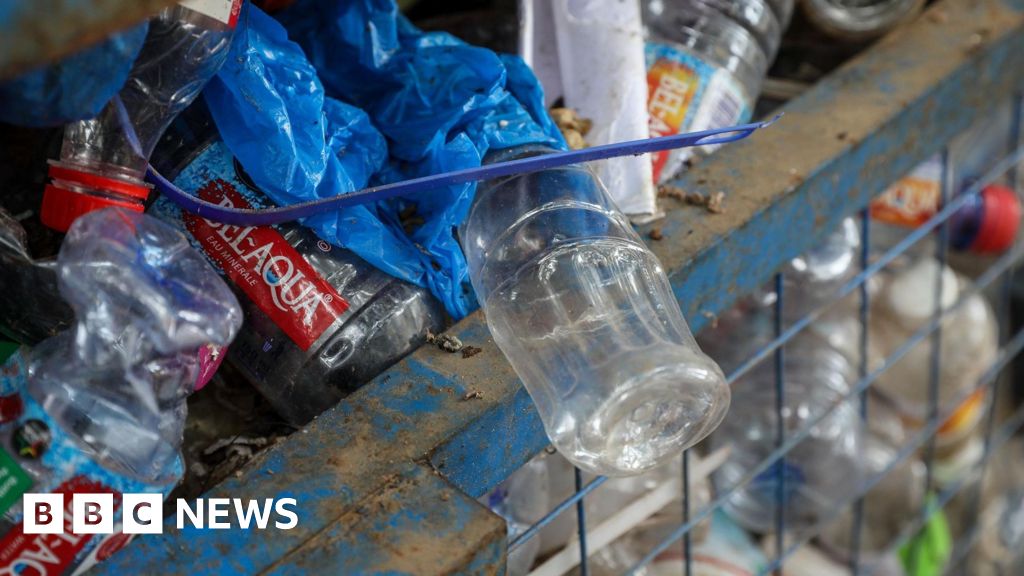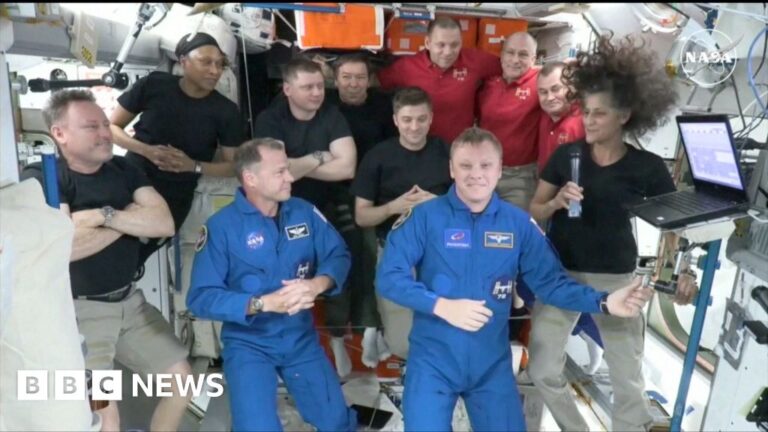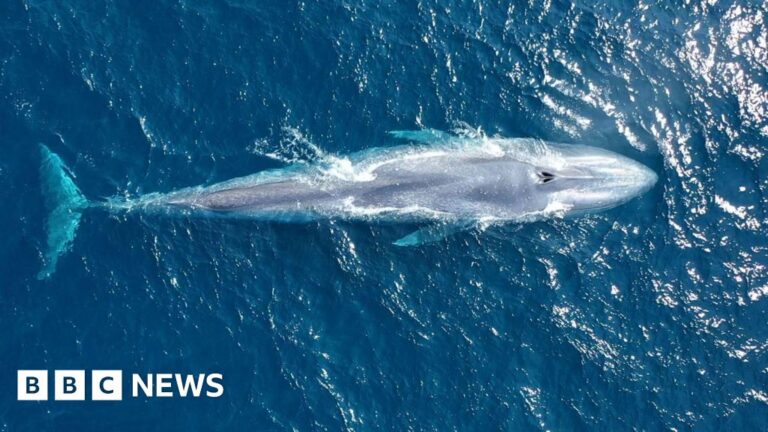Plastic production has exploded in the last century to some it has been a miracle product while to others it is a pollution nightmare Scientists have estimated that there are nearly 200 trillion pieces floating in the world’s oceans and this could triple if no action is taken
In 2022 countries agreed to develop a legally binding global treaty to cut the waste and the harmful chemicals some plastics contain but after two years no agreement has been reached
On Tuesday the world’s nations meet again at a UN conference in Geneva could they finally agree how to curb the plastic excesses
Human societies have used plastics that occur naturally in the environment for hundreds of years in the form of rubber horn and shellac But the 20th Century brought the explosion of synthetic plastics made from processing fossil fuels
The material’s versatility strength and heat-resistant properties has lent itself to thousands of uses from sewage pipes to life-saving medical equipment to clothing
It has become ubiquitous in a short time without understanding its full impact explains Dr Alice Horton research scientist at the National Oceanography Centre
Proportional to life on earth plastics have been around for no time at all there are people alive that weren’t using plastics as children I think that’s what makes this quite a concerning material
It has exploded in such a way that we are using it in every application in our lives and yet we are suddenly realising there may be problems with it
Levels of plastic production have grown exponentially over the last few decades In 1950 two million tonnes was produced by 2022 that had risen to 475 million tonnes
Although plastic can be reused the cost and availability of recycling infrastructure means very little is About 60 of all plastics are single use and just 10 are estimated to be recycled
Plastic has been shown to accumulate in the marine environment where it poses particular problems for wildlife who can ingest it
They can confuse it as food which then harms their internal organs and also can lead to fatalities because of digestion difficulties
When it enters the environment most plastic breaks down into smaller and smaller pieces known as microplastics They have been found across all geographical ranges from the deep sea to mountain tops and across all living systems ever tested
Research is continuing to understand the full impact with different species faring better than others But Dr Horton from the National Oceanography Centre warns there is a threshold where animals will start to be harmed
When we get accumulation of plastic in tissues we start seeing inflammation cell damage hormonal changes Things that are not outright going to kill an organism but likely to have this accumulative long-term effect whereby they get weaker and weaker and sicker and sicker and either become diseased or die
Plastics are a grave growing and under-recognised danger for human health according to a new expert report
The Lancet Countdown estimated that health-related disease and death from the plastic crisis is responsible for at least 1 5tn a year in health-related damages
These impacts can range from air pollution from the production of plastic through to elevated risk of cancer respiratory illnesses and miscarriages from plastic contamination in our bodies
Plastics contain more than 16 000 chemicals such as dyes and flame retardants some of which are toxic and cancer-causing
Despite the growing body of evidence of the hazards of plastic the Lancet report highlights that there is a lack of transparency as to what is in most products Just a quarter of plastic chemicals have data on their impact but of those tested 75 were found to be highly hazardous
In 2022 countries agreed a global treaty was needed in two years to tackle the issue
That deadline passed in December 2024 after five rounds of negotiations with no treaty having been signed
On Tuesday more than 170 nations will meet again to try to get a deal over the line
The main issues they are trying to get agreement on include
Targets on cutting the production levels of single-use plastics
Bans on some of the most harmful chemicals in plastic
Universal guidance on the design of plastic products
Financing of this effort
Products that have to meet consistent design standards can help to improve recycling save costs and reduce the demand for virgin plastics Rob Opsomer executive lead of plastics and finance at the Ellen McArthur Foundation which co-convenes the Business Coalition for a Global Plastics Treaty told the BBC
So to give you one example a drinks bottle if it is coloured the value of what you can get from it if you sell the recycled material is half the value of a clear uncoloured bottle
Nearly 100 countries including the UK are calling for an ambitious treaty which would include a commitment to limit production levels But there has been strong opposition from a group of oil-producing nations including Russia and Saudi Arabia who want the talks to focus not on producing less but recycling more
Demand for oil in global energy and transport systems is expected to peak in the next few years as countries move to greener technologies This could leave plastic as one of the few growth markets for the oil industry Any efforts to limit production could pose short term economic damage to the petrostates
But for those users of plastics not having clear global regulations is costing them
It is a fundamental risk Businesses don’t want packaging with their brand name on it to be littering the streets and our oceans
He said there was also the cost for businesses of having to comply with hundreds of new standards globally every year on plastics
The Business Coalition which includes some of the biggest global users of plastic such as Nestle and Unilever is calling for governments to introduce coordinated taxes on their businesses to help pay for the cost of recycling and cleaning up plastic waste
Single-use plastic is the biggest contributor to plastic waste in the environment and most of our daily consumption of this comes from food packaging
You can take a reusable container or cup if you are getting a takeaway and when food shopping consider taking a reusable sealed bag to weigh your fruit and vegetables
It is estimated that more than a quarter of microplastics in the environment come from car tyres For those that are able walking and cycling to the local shops or sharing car journeys with friends or neighbours can help
And avoid plastics that break down to microplastics more easily such as chewing gum and glitter There are many non-plastic alternatives still available which means you can keep having fun at festivals
Source link




